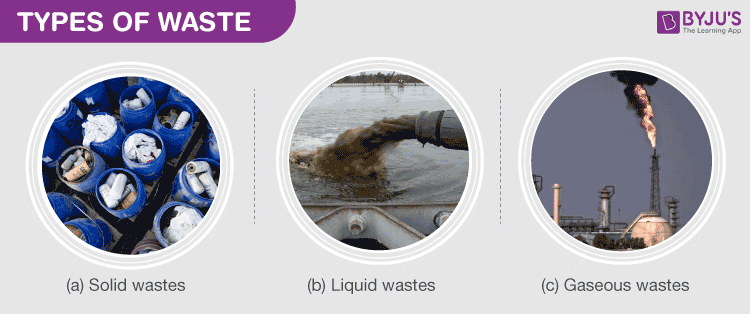We’ve had a problem with wastes ever since the industrial revolution. Technology has given rise to automation and this in turn has led to a profound effect on our environment. From non-biodegradable plastics to ozone destroying CFCs, discover how accumulation of wastes affects the planet.
The different sources of wastes can be identified by recognizing the types of wastes. Let us first define the term waste. Waste is any substance which is discarded after primary use or in other words, there is no further use for the product. We generate a huge amount of wastes in our day to day life. From the groundnut shells that we throw after eating, to the food wrappers that we discard after consuming its contents are all parts of the activities that contribute to the generation of waste.
Before discussing different sources of wastes, let us get a brief idea about various types of wastes that we generate.
Types Of Waste
In general, the wastes may be classified into the following categories:

Solid wastes – These are the unwanted substances that are discarded by human society. These include urban wastes, industrial wastes, agricultural wastes, biomedical wastes and radioactive wastes.
Liquid wastes – Wastes generated from washing, flushing or manufacturing processes of industries are called liquid wastes.
Gaseous wastes – These are the wastes that are released in the form of gases from automobiles, factories or burning of fossil fuels like petroleum. They get mixed in the other gases atmosphere and occasionally cause events such as smog and acid rain.
Sources Of Wastes
Generation of waste is a part and parcel of day-to-day human life. Wastes can be generated from various sources.
This includes trash or garbage from households, schools, offices, marketplaces, restaurants and other public places. Everyday items like food debris, used plastic bags, soda cans and plastic water bottles, broken furniture, broken home appliances, clothing, etc. make up the wastes generated from such sources.
Medical or Clinical sources of wastes
Wastes produced from health care facilities, such as hospitals, clinics, surgical theaters, veterinary hospitals, and labs are referred to as medical/clinical waste. This includes surgical items, pharmaceuticals, blood, body parts, wound dressing materials, needles and syringes
Agricultural sources of wastes
Waste generated by agricultural activities, including horticulture, livestock breeding, market gardens and seedling nurseries, are called agricultural wastes. Wastes generated from this source include empty pesticide containers, old silage wrap, out of date medicines and wormers, used tires, surplus milk, cocoa pods and corn husks.
Industrial Sources of Wastes
These are the wastes released from manufacturing and processing industries like chemical plants, cement factories, power plants, textile industries, food processing industries, petroleum industries. These industries produce different types of waste products.
Wastes from Construction or Demolition
Concrete debris, wood, huge package boxes and plastics from the building materials comprise construction waste, which is yielded as a result of the construction of roads and building. Demolition of old buildings and structures also generate wastes and these are called demolition waste.
Commercial Sources
As a result of the advancement of modem cities, industries and automobiles, wastes are generated daily on a large scale from commercial enterprises. These may include food items, disposable medical items, textiles and much more.
Mining Sources
Mining activities also generate wastes that have the potential to disturb the physical, chemical and biological features of the land and atmosphere. The wastes include the overburden material, mine tailings (the waste left after extracting the ore from the rock), harmful gases released by blasting etc.
Radioactive Sources
Radioactive sources of wastes include nuclear reactors, mining of radioactive substances and atomic explosions.
Electronic sources of waste
The DVD and music players, TV, Telephones, computers, vacuum cleaners and all the other electrical stuff at your home, which are of no more use, are electronic wastes. These are also called e-waste, e-scrap, or waste electrical and electronic equipment (WEEE). Some e-waste (like TV) contains lead, mercury and cadmium, which are harmful to humans and the environment.
To understand more about different sources of wastes, download Byju’s -The Learning App.
Related links:
| Radioactive Wastes and Pollution |
| Industrial Waste: Types |

Thank you byjus
Hi, I enjoy reading your blog! I can totally relate to your point as I am currently employed as a virtual nurse for a full-service BPO company.